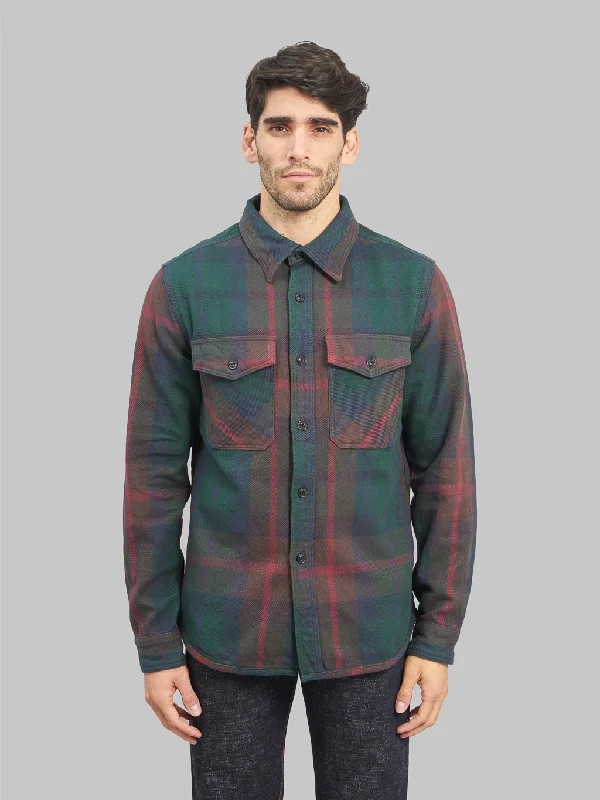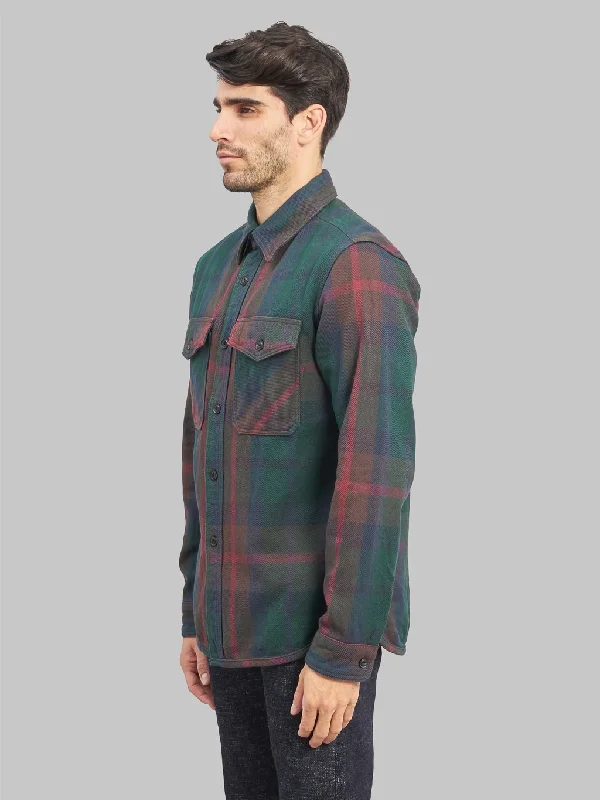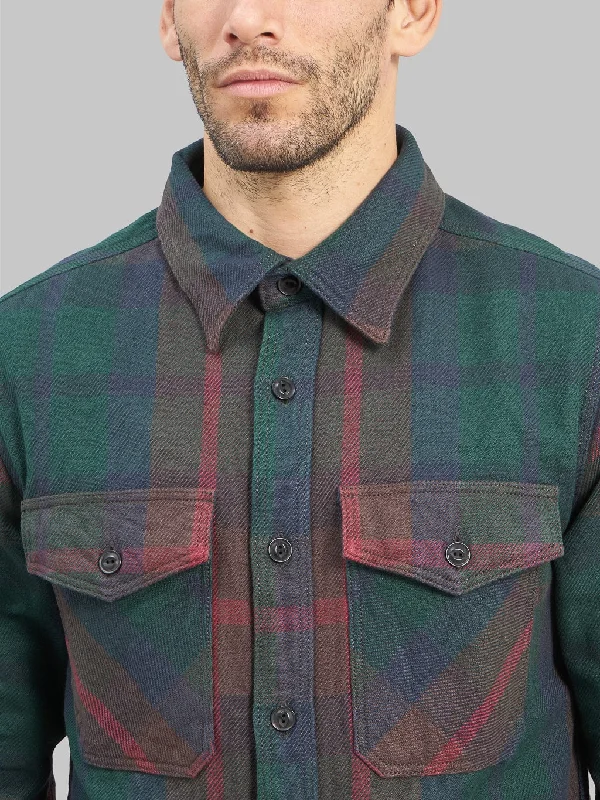The UES extra-heavy flannel shirt, weighing 15.5oz, is renowned as one of the world's thickest and most exceptional flannel shirts. Using a dobby loom, UES employs innovative techniques to modify the warp and weft, creating a distinctive crepe weave or Amundsen weave that imparts a unique pear-skin-like texture to the fabric. Crafted on the historic Schoenherr weaving machine, attributed to Louis Ferdinand Schönherr, the 15.5oz fabric is characterized by its soft texture, achieved through gentle handling to avoid excessive pulling. A brushing process enhances softness and warmth, demanding advanced sewing technology due to the fabric's remarkable thickness.
The carefully balanced threading of warp and weft allows graceful fabric movement, ensuring a comfortable fit despite its thickness. Meticulous details, such as rolled and triple-chain-stitched main body seams, ivory palm buttons and a sturdy rolled hem achieved through piping, contribute to the garment's durability. Direct dyeing of colored threads allows for moderate fading, creating a soft aging effect with continuous wear. UES flannel shirts redefine casual American style with their heavyweight fabric and a slightly raised inner layer, showcasing a denim-like aging effect. Every production step, from spinning and dyeing to knitting and sewing, is meticulously executed in Japan.
The flannel shirts from UES tend to run a bit small compared to American sizing. Along with their Japanese sizing, they offer a slim fit, so we usually suggest going one size up from your regular American size. If you usually wear a size M in American brands, you'll find a good fit with this shirt in size 3 (L). However, as always, we recommend consulting our size chart for the perfect fit.
UES is a small Japanese label founded by Chuji Matsumoto in 1994. UES comes from the English word ""Waste"", which means that Matsumoto-San wants you to make full use of each garment for as long as possible before discarding it. It is a small judgement of the concept of disposable wear that is so commonplace today in the world of fashion and from which Matsumoto-San disassociates himself completely.




